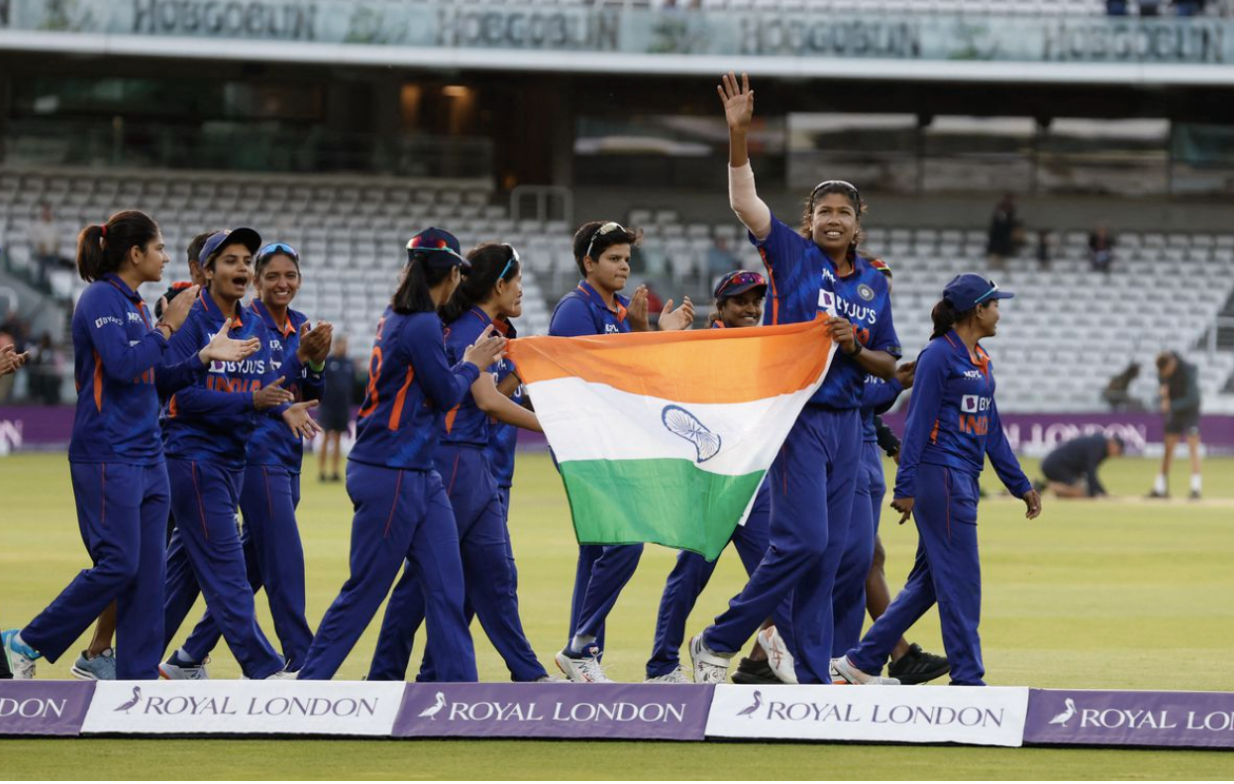Indian Women's Cricket Team To Receive Equal Pay To The Men’s Team
Women's One Day International Series - September 24, 2022 India's Jhulan Goswami and teammates celebrate after winning the match against England. Action Images via Reuters/Peter Cziborra/File Photo
An announcement by the Board of Control for Cricket in India (BCCI) on Oct. 27 has confirmed that India’s men's and women's cricket teams will start being paid equally, ensuring that female players at the international level receive the same match fee of 1,500,000 rupees ($18,225). These new wage changes also call for renewed contracts that female athletes will be signing -- contracts which will also be providing them with equal play times as those of their male counterparts.
Not only has this new pay equity policy been implemented, but starting next year, the BCCI has also approved the planning of the Women's Indian Premier League. The annual Indian Premier League (IPL) is a franchise cricket league in India, as well as the most-attended cricket league in the world, with a brand value of 47,500 crore rupees (US$5.9 billion) as of 2019. Since its creation, the IPL has only included male cricket players. Sports analysts predict that implementing a women’s Premier League would give women the space to showcase their athletic talents, as well as raise game revenues and generate more athletic sponsorships.
The establishment of this female tournament, along with the new payment policies, are all actions that are ushering in a new era for women’s cricket in India. The former Captain of India’s Women’s Cricket team, Mithali Raj, demonstrated her joy by tweeting this announcement as a “historic decision for women’s cricket in India,” given the large gender pay gaps that exist in many of India’s athletic-oriented industries.
The current pay gap between the men's and women's sports teams is staggering; the best male cricketers are paid a sum that is 14 times that of the best female cricketers. Given that cricket is a sport that evokes a sense of unity and nationalism in India, monumental steps to combat such disparities could have a larger trickle-down effect on other industries in the nation that continue struggling to improve existing pay parities.
Indian women cricketers lifting the Women's Asia Cup 2022 trophy, Swarajya
The Center for Global Development has found that closing the gender pay gap will not only benefit women but will also bolster business performance and strengthen the global economy. Evidence analyzed from a range of countries highlights that by increasing the average shares of household income, families as a whole benefit as investments towards education, health, nutrition, and housing are holistically elevated.
By elevating gender parity as a core business value, the BCCI has set an example for other international cricket teams to follow. Although the wage gap between male and female athletes is becoming narrower, they still exist. In the Forbes 2022 list of the highest-paid athletes worldwide, the top 10 spots were occupied by men.
Additionally, although India’s men's and women's teams will get paid equally in terms of match fees, athletic contracts in cricket are also bound by a retainership system. Based on a player's skill level and success in the sport, each player is ranked from a grade ranging from A, B, and C. There are still discrepancies based on how each player is paid according to their grade and gender.
Women cricketers in India that are ranked Grade A players get paid $603,744, whereas Grade A male cricketers get paid $845,242. However, the president of BCCI, Roger Binny, believes that cricket, as a sport and business, is developing and that the progress being made in the industry will continue to close the existing wage gaps between male and female players.
The wage gap between men and women cricket players, based on the retainership, exists because of the fact that male athletes tend to play more games, thus generating more advertisement and corporate sponsorship revenues based on the size of their audiences. However, it has been argued that implementing a basic equal fee could motivate more women to join, watch, and pursue sports at the national competitive level, thus commanding a similar economic following as the men’s matches in future years to come.


